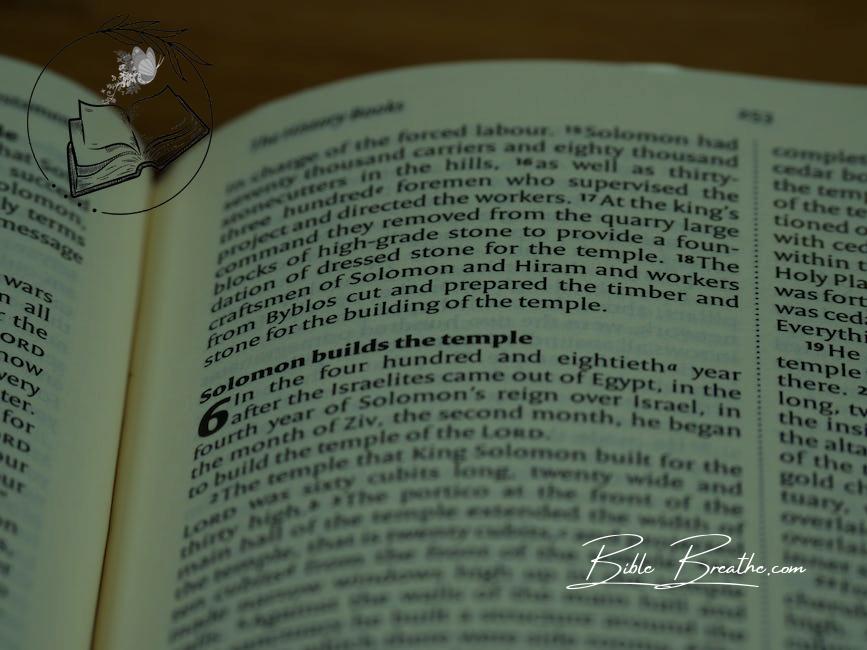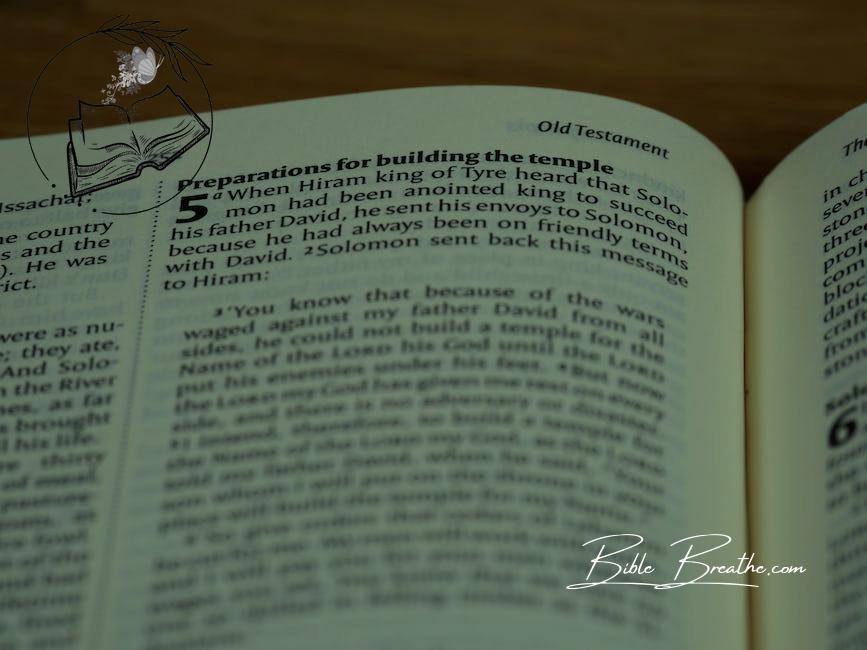Verse Mapping: Discovering the Bible’s Hidden Treasures – it’s like going on a treasure hunt in the Word of God.
So, where did this whole verse mapping craze come from?
Well, believe it or not, it started right over at Proverbs 31 Ministries and their passion for digging into God’s Word.
Now, what’s the deal with verse mapping in your Bible study?
It’s all about peeling back the layers, understanding the real heart of those verses.
We’re talking about getting into the nitty-gritty, understanding the original Greek and Hebrew context, and getting a grip on hermeneutics.
The goal?
To get rock-solid theological understanding that’ll keep you grounded in your faith.
As we jump into this adventure of verse mapping, we’re not just reading the Bible; we’re experiencing it.
Get ready to grow spiritually and really grasp the scriptures like never before.
It’s time to find those hidden gems and let them light up your life with God’s wisdom.
🌟
Key Takeaways
- Verse mapping is a Bible study method that emphasizes understanding the broader context of a specific verse or passage within the entire Bible. It encourages an in-depth exploration of the surrounding verses, chapters, and historical, cultural, or theological context to gain a comprehensive understanding.
- Understanding the broader context is crucial in Bible study to prevent misinterpretation and ensure that the intended meaning of a verse aligns with the overall message of the Bible. Context helps clarify the author’s intent, the audience, and the circumstances that influenced the writing.
- Discernment in choosing Bible study methods is essential. While verse mapping can be a valuable tool, it’s vital to recognize that no single method fits all. Different methods suit various learning styles and objectives, so choosing the most effective method based on individual preferences and study goals is key.
- Verse mapping offers potential benefits such as a deeper understanding of individual verses, fostering a more profound connection with the text, and promoting personal reflection and spiritual growth. However, pitfalls may include potential misinterpretation or focusing too narrowly on a verse without considering its broader context.
- To maximize the benefits of verse mapping, it’s important to balance the in-depth exploration of a specific verse with a holistic understanding of the Bible, integrating insights gained from the method into one’s overall understanding of Scripture.
Navigating the Art of Verse Mapping
Photo modified by BibleBreathe.com. Original photo by Brett Jordan on Pexels
Hey there, curious soul!
If you’ve ever pondered the idea of verse mapping, buckle up because we’re about to take a thrilling ride through this unique way of uncovering the riches of scripture.
Think of it as donning a pair of special glasses that reveal hidden gems in the Word.
Let’s dive into the fascinating world of verse mapping together!
Selecting a Specific Bible Verse
Imagine you’re on a treasure hunt, and the Bible itself is your treasure map.
Verse mapping begins by carefully picking a particular verse that tugs at your heartstrings or addresses a burning question you have.
It’s like selecting the perfect key to unlock a door overflowing with divine wisdom.
Whether it’s a verse about love, faith, or guidance, the choice is yours.
“Thy word is a lamp unto my feet, and a light unto my path.” – Psalm 119:105 (KJV)
Deconstructing the Chosen Verse
Once you’ve chosen your verse, it’s time to break it down, just like a skilled surgeon examines the intricacies of the human body.
Verse mapping involves dissecting the verse into its fundamental components, scrutinizing each word, phrase, and its surrounding context.
It’s akin to studying the intricate details of a breathtaking painting, understanding the brushstrokes and colors that bring it to life.
Exploring Different Approaches to Verse Mapping: Journaling vs. Index Card Methods
Now, let’s talk about the tools in our treasure hunter’s kit.
There are two popular ways to embark on a verse mapping adventure: journaling and the index card method.
Journaling is like keeping a diary of your spiritual journey.
You jot down the verse, its context, your personal insights, and perhaps even your heartfelt prayers.
It’s akin to crafting a heartfelt letter to God, where you pour out your heart and thoughts onto the pages of your journal.
On the flip side, the index card method is more concise and portable.
It’s like having a set of flashcards for your soul.
You write the verse on one side and your key insights or reflections on the other.
These cards can be carried with you, serving as constant reminders of the profound wisdom you’ve unearthed.
Whichever method you choose, verse mapping is a profound way to engage with scripture.
It goes beyond mere reading; it’s about digging deep, understanding the Greek and Hebrew context, and gaining a more profound theological insight.
“Study to shew thyself approved unto God, a workman that needeth not to be ashamed, rightly dividing the word of truth.” – 2 Timothy 2:15 (KJV)
So, are you ready to embark on your very own verse mapping adventure?
It’s a journey that will lead you to a deeper spiritual understanding and growth, much like discovering hidden treasures in the vast sea of the Bible.
Let’s set sail!
Unveiling the Magic of Verse Mapping
Photo modified by BibleBreathe.com. Original photo by Luis Quintero on Pexels
Ever wondered what in the world “verse mapping” is and how it can turbocharge your Bible study journey?
Well, my friend, you’re in for a treat!
Let’s dig deep and uncover the wonders of verse mapping.
The Marvels of Verse Mapping
Think of verse mapping like grabbing a pair of binoculars to explore the intricate details of a breathtaking landscape.
It’s your ticket to unveiling the hidden treasures nestled within the Scriptures.
Tapping into Wisdom with Commentaries
“In the multitude of words, there wanteth not sin: but he that refraineth his lips is wise.” – Proverbs 10:19 (KJV)
Imagine you’re diving into a gripping novel, and suddenly, you encounter a mind-boggling paragraph.
What’s your move?
You’d probably reach for a trusty guide or commentary to decode the author’s intentions.
Well, verse mapping is a bit like that.
It’s about consulting commentaries crafted by brilliant minds – scholars and theologians.
These folks offer priceless insights, historical context, and theological perspectives that light up the text like a beacon.
It’s as if you’ve got a wise companion decoding the mysteries of a complex plot.
Unearth the Original Greek or Hebrew Context
Man shall not live by bread alone, but by every word that proceedeth out of the mouth of God.” – Matthew 4:4 (KJV)
Words are the bricks of communication, right?
In verse mapping, we’re not just satisfied with the surface.
Nope, we dive deep, like exploring the roots of a massive oak tree to understand its strength and vitality.
So, we roll up our sleeves and delve into the original Greek or Hebrew words used in a verse.
It’s like discovering hidden gems buried beneath the surface.
By uncovering the linguistic roots, we gain a profound understanding of the message the biblical authors were trying to convey.
It’s like seeing an old painting in a new light.
Getting the Full Scoop on Verse Context
For I know the thoughts that I think toward you, saith the LORD, thoughts of peace, and not of evil, to give you an expected end.” – Jeremiah 29:11 (KJV)
Imagine getting a letter with just one sentence torn out of it.
It could lead to confusion, right?
Well, verse mapping urges us to consider not just the verse we’re diving into but also the ones that come before and after.
It’s like solving a jigsaw puzzle—each piece contributes to the grand picture.
This broader context helps us grasp the full narrative and purpose behind the verse.
It’s like seeing a movie scene in the context of the whole plot.
So, my friend, in your faith journey, verse mapping is a trusty tool.
It’s like having a treasure map for your spiritual growth.
By making use of commentaries, exploring linguistic roots, and considering the broader context, you’ll unlock the Bible’s hidden gems.
It’s like going on a thrilling adventure and discovering the heart of God’s message.
So, why not give verse mapping a whirl in your next Bible study quest?
Trust me; it’s a journey worth taking!
Exploring Critiques and Cautions Regarding Verse Mapping
Photo modified by BibleBreathe.com. Original photo by Brett Jordan on Pexels
Now, let’s turn our attention to some of the critiques and concerns surrounding verse mapping.
Like any treasure hunt, there are potential pitfalls and challenges along the way.
So, let’s navigate these waters and explore the nuances of verse mapping.
The Pitfall of Narrow Focus
One of the main critiques of verse mapping is the danger of having tunnel vision.
It’s akin to examining a single puzzle piece under a magnifying glass and missing the grand masterpiece it’s a part of.
When we dive deep into individual verses, there’s a risk of losing sight of the broader narrative of the Bible.
Each verse is like a brushstroke in a divine painting, and understanding its role in the larger canvas is essential for sound theology.
“For precept must be upon precept, precept upon precept; line upon line, line upon line; here a little, and there a little.” – Isaiah 28:10 (KJV)
Balancing Personal Connection and Interpretation
Verse mapping encourages a personal connection with scripture, which is undoubtedly valuable.
However, there’s a fine line between making scripture relevant to our lives and misinterpreting its original meaning.
It’s like taking a quote from a novel and twisting it to suit your narrative without considering the author’s intent.
While personal relevance is important, we must avoid distorting the intended message of the verses to fit our desires or agendas.
The Peril of Out-of-Context Interpretation
When we focus solely on what “jumps out” in a verse, we risk taking things out of context, much like overhearing a snippet of a conversation and jumping to conclusions.
This approach can lead to misunderstandings and misinterpretations.
To avoid this, it’s crucial to consider the surrounding verses and the cultural, historical, and linguistic context in which they were written.
“Prove all things; hold fast that which is good.” – 1 Thessalonians 5:21 (KJV)
The Lure of a Self-Centered Approach
Verse mapping, when not approached with humility, can unintentionally lead to a self-centered view of Scripture.
It’s like reading a biography and thinking the whole story revolves around you.
While personal application is valuable, we must always remember that the Bible’s primary focus is God and His redemptive plan.
Striking a balance between personal growth and recognizing the overarching message of the Bible is key.
In closing, verse mapping is a potent tool for Bible study, but it does come with its critiques and concerns.
Like any method, it requires careful consideration and a commitment to maintaining a holistic understanding of Scripture.
When approached with discernment and humility, verse mapping can enrich your spiritual journey and deepen your understanding of God’s Word.
The fear of the Lord is the beginning of wisdom: and the knowledge of the holy is understanding.” – Proverbs 9:10 (KJV)
Frequently Asked Questions (FAQs) About What Is Verse Mapping
What is the difference between verse mapping and inductive Bible study?
Verse mapping involves a detailed analysis of a single verse, dissecting its words and context.
Inductive Bible study, on the other hand, explores entire passages or books, focusing on observation, interpretation, and application of the text.
How often should one practice verse mapping?
The frequency of verse mapping varies from person to person.
It can be done as often as desired.
Some may do it daily to deepen their understanding of specific verses, while others may do it weekly or as needed to study and apply God’s Word more effectively.
Is verse mapping recommended by well-known theological scholars?
Verse mapping, a method of deeply studying and understanding Scripture, is favored by many scholars.
It involves breaking down verses, exploring their context, history, language, and personal application.
Although not universally endorsed, respected theologians appreciate it as a valuable tool for in-depth comprehension and personal reflection, fostering a richer understanding and application of the Bible’s teachings.
How does verse mapping compare to other Bible study methods?
Verse mapping is a focused approach to studying specific Bible verses, delving into their context, KEYWORDs, and cross-references.
Unlike broader study methods, verse mapping offers an in-depth exploration, enhancing understanding.
While other methods provide a comprehensive overview of passages or themes, verse mapping allows a more detailed analysis of selected verses.




